Making your own Homemade Mustard is surprisingly simple! With only a handful of ingredients and 24 hours, you can have a tasty homemade condiment ready to go.
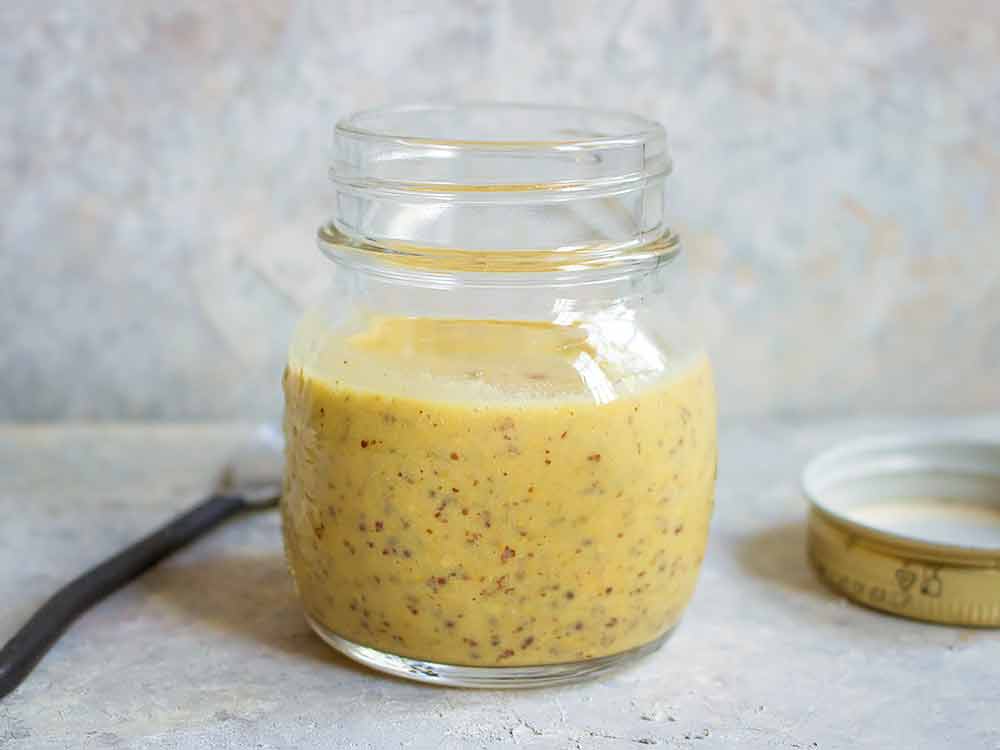
Jump to:
Why make Homemade Mustard?
"Whyyyy would you do that??" my friend asked pointedly, when she saw the bowl of sunshine-yellow goodness on my counter. She was—I could tell—about to jump on me for my crazy DIY ways. I didn't have an answer that wouldn't get me into deeper trouble. I'm a serial condiment maker. I'm that person who makes homemade salad dressings for her Caprese salads and homemade pizza sauce for that irresistible mushroom and caramelized onion pizza.
I wished in the moment that I had a salesperson's skills to explain why homemade mustard is just something you want to do, something with an end result that's just so good—more than worth the very minimal effort (seriously minimal)—that you can't help but do it again and again. But all I could blurt out was, "Taste it!"
Her widening eyes and second spoonful said it all. Condiments you make at home, whether salsa or pesto or BBQ sauce or mustard, just taste better. Way better! Don't get me wrong, jarred mustard from the store is absolutely fine; I've certainly bought more than my share. But homemade is an elevation. There's a brightness to it that's always missing from commercial mustards. As a food writer, I hesitate to use that vague word "bright" to describe a flavor, but if I could pass a spoon through this screen so you could taste for yourself, you'd know exactly what I meant.
Let's Make Mustard!
So let's get to it, and make a super simple country-style mustard. What's involved, you ask, wondering where the trick is? There's no trick: It's sooo easy. If you can measure ingredients with reasonable competence, push a button on a spice grinder, and stir liquids without splashing anything into your eye, you can make mustard. It is, I would say, the easiest of all condiments, as there's no knife work or cooking involved, although do note that you'll need to factor in a hands-off, 24-hour waiting period for the mustard to fully develop.
Serve this mustard on a sandwich, with homemade fries, or even as a marinade ingredient!
How to Make Homemade Mustard
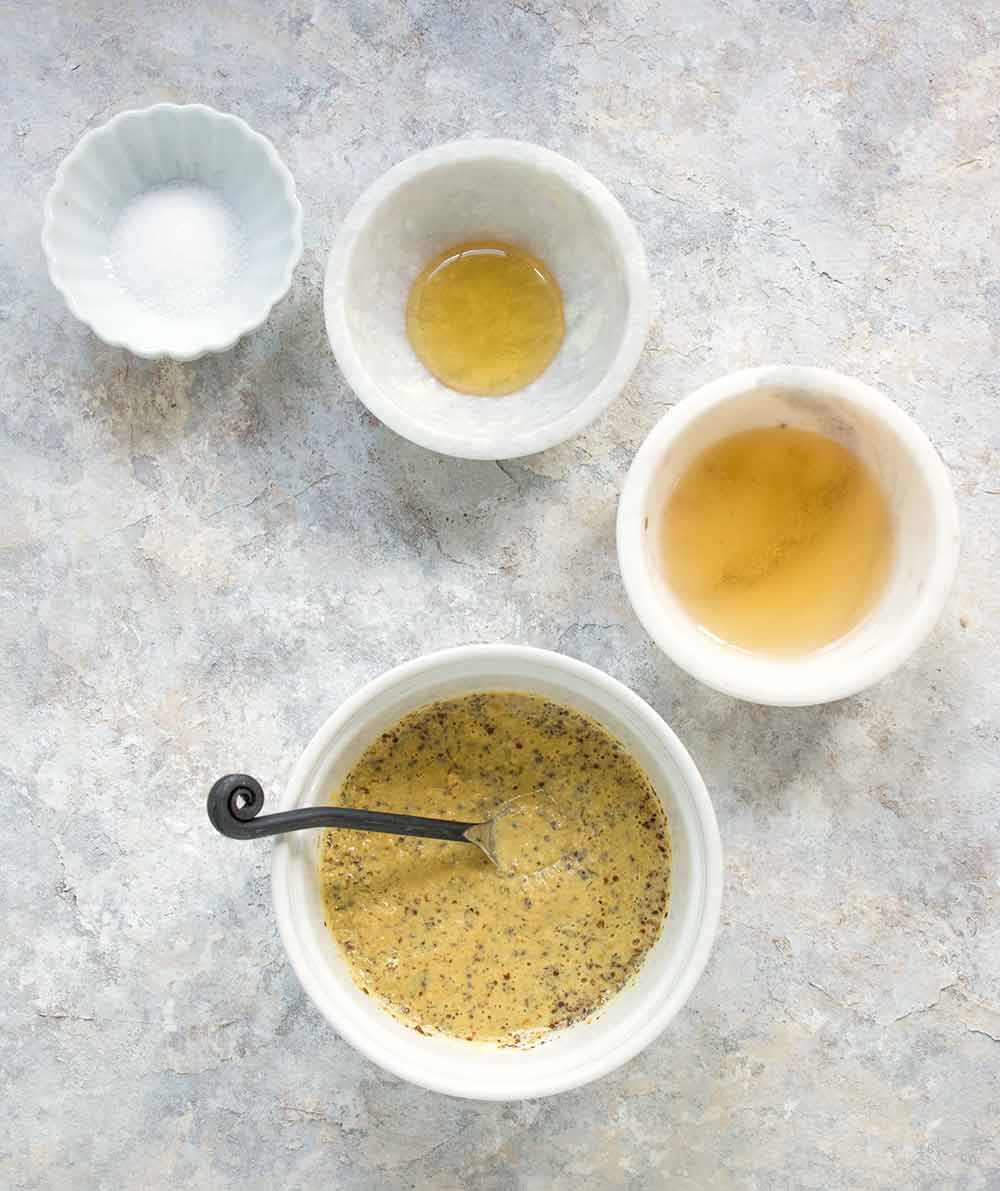
- Grind seeds until most are cracked in half.
- Tansfer seeds and powder to non-reactive bowl.
- Mix in cool water.
- After 10 minutes, add the vinegar.
- Stir in salt and sweetener.
- Cover and store in the fridge for 24 hours.
- Your mustard is ready to use!
Full directions for how to make Homemade Mustard are in the printable recipe card below.
Tips & Tricks for Homemade Mustard
Adjust to Taste
The beautiful thing about homemade mustard is that you can customize it in endless ways by experimenting with different vinegars, adding herbs like tarragon or dill, or sprinkling in spices like cardamom, paprika, or allspice. Use all mustard powder for a smooth version or all cracked seeds for a heady stone-ground style. Add a ¼ teaspoon of ground turmeric to recreate the bright yellow ballpark mustard of our youths.
Double Your Batch
Homemade mustard will last a very long time in the refrigerator, so once you nail down your masterpiece homemade mustard recipe, double the quantity. This recipe creates enough homemade mustard to fill a cute canning jar, like a jelly jar.
Homemade Mustard FAQs
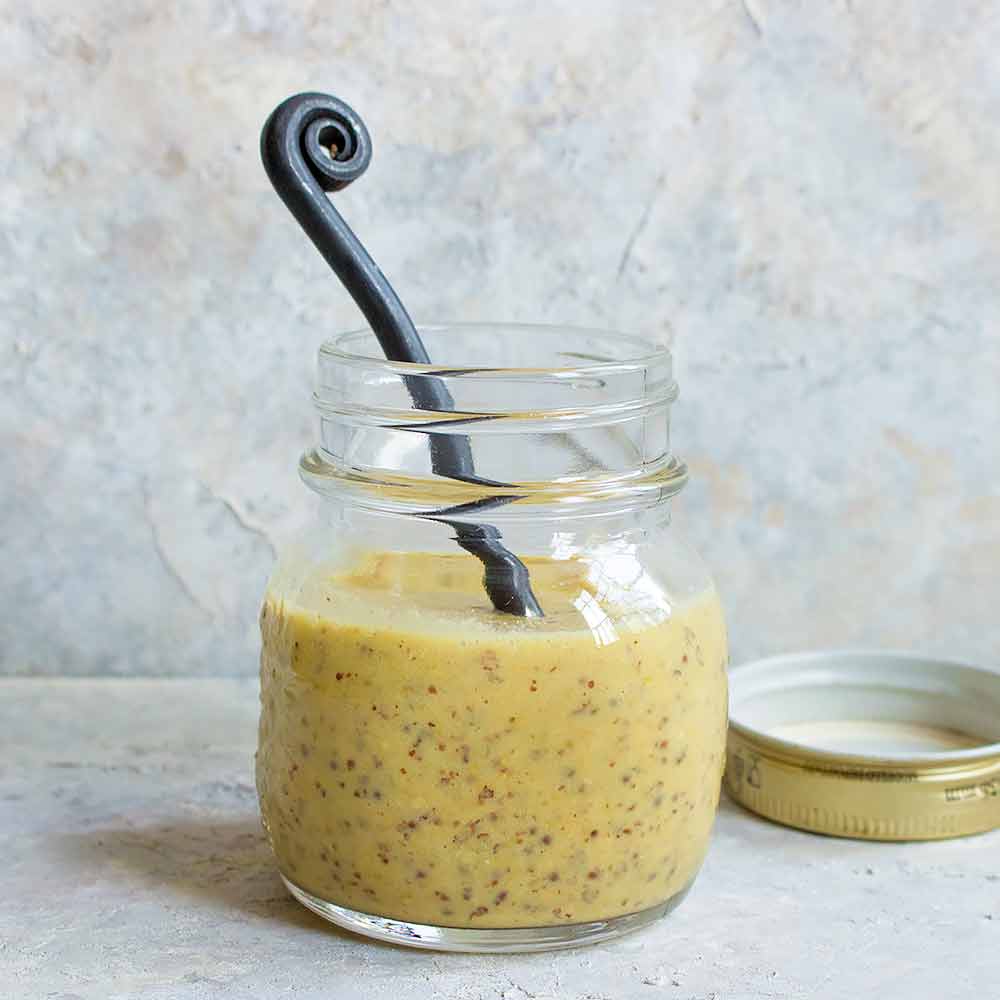
How is mustard made? How does it work?
Chemistry, fellow mustard lovers—it's all about chemistry. When you crack or pulverize mustard seeds and mix them with a liquid, such as water or beer, enzymes within the seeds react and create that sinus-clearing bite we all know and love.
Left to its own devices, this reaction would continue on and on until it fizzled out to flavorlessness over a period of days. Instead, we halt that process early on with an acid, such as vinegar, which freeze-frames and sets the spicy bite while at its perfect peak. Then, we season and sweeten the mustard to our liking, stash it in the fridge for a day, and—voilà!—homemade mustard.
Where do mustard seeds come from?
Mustard seeds come from the mustard plant, which produces tasty, spicy greens that are great in salads and grow very happily in most backyards. When the plants flower, they produce seed pods that you leave on the plant to dry, then harvest. Each seed pod contains about a half-dozen seeds; each plant, 20-30 pods. Different varieties of mustard produce different types of seed: yellow (white) seeds are mild, brown and black are spicy and pungent.
Mustard—which is related to broccoli, radishes, and kale—is a must-have plant in my vegetable garden. So, yes, I grow my own mustard seeds, with which I make my own mustard. Like I said, I'm that person.
Recipe

Equipment
- spice grinder or mortar and pestle
- measuring cups and spoons
- non-reactive bowl ceramic, glass, plastic; not metal
Ingredients
- 1 ½ tbsp yellow mustard seeds
- 1 ½ tbsp brown mustard seeds
- ⅓ cup mustard powder
- ⅓ cup cool water or beer
- 1 tbsp apple cider vinegar or white vinegar
- 1 tbsp honey or maple syrup; optional
- 1 tsp kosher salt
Instructions
- Add both types of mustard seeds to your spice grinder, pulse three times (with a half-second pulse), then check the seeds. You're looking for most of the seeds to be cracked in half, although there may be a good amount of the smaller brown seeds that are still whole, which is okay. If you're not quite there, pulse again and recheck.
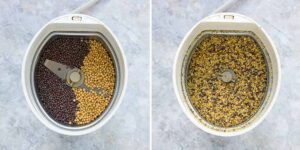
- Transfer the cracked mustard seeds to the non-reactive bowl, along with all of the mustard powder.
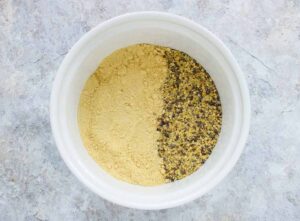
- Pour in the cool water and stir to mix thoroughly.
- After 10 minutes, add the vinegar to stop the reaction and set the heat.

- Stir in the salt and sweetener (if using).
- Cover the bowl, place it in the refrigerator, and let it sit for 24 hours.
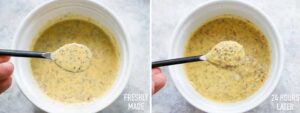


Karen says
Sounds delicious and fun to make. One question, can you leave the salt out? I am on a low sodium diet and try not to add salt to any homemade recipes if I can get away with it. Can't wait to try this!
Chessie says
What do you think about using white wine instead of the beer (or water)?
I think I need to try this, but I don't do beer (celiac disease).
Thanks!
barbara Manning says
what is a non reactive bowl? Ceramic? Plastic? And while I'm here, isn't that cute little spoon with the curl at the end made of metal? And wouldn't that be reactive? Thanks! Love the recipe and will try it.
Sue says
I followed the recipe using water and leaving out the sweetener. While hot and delicious, it is very thick, not like your pictures. 1. Can I thin it now or will that alter the chemistry? 2. Would the sweetener have made a big difference in viscosity?
Chelsea says
What type of mustard greens do you grow? I have some giant Japanese red mustard greens I'm planting. I'm wondering if those seeds would be the brown you were describing and work with this specific condiment?